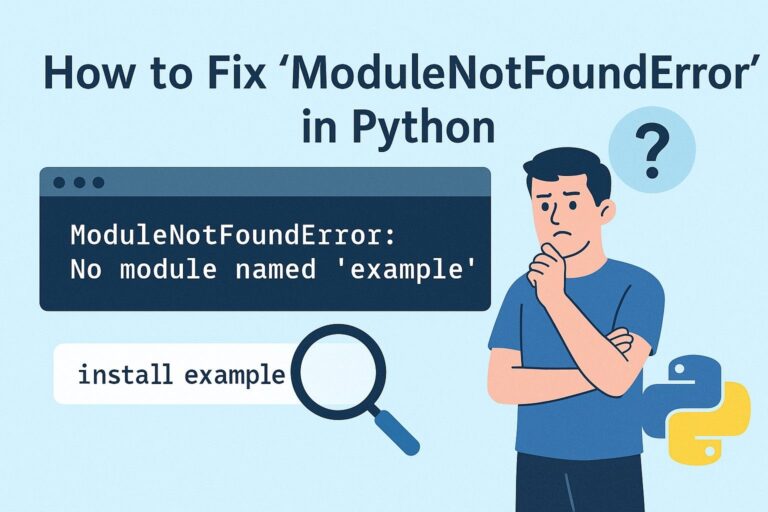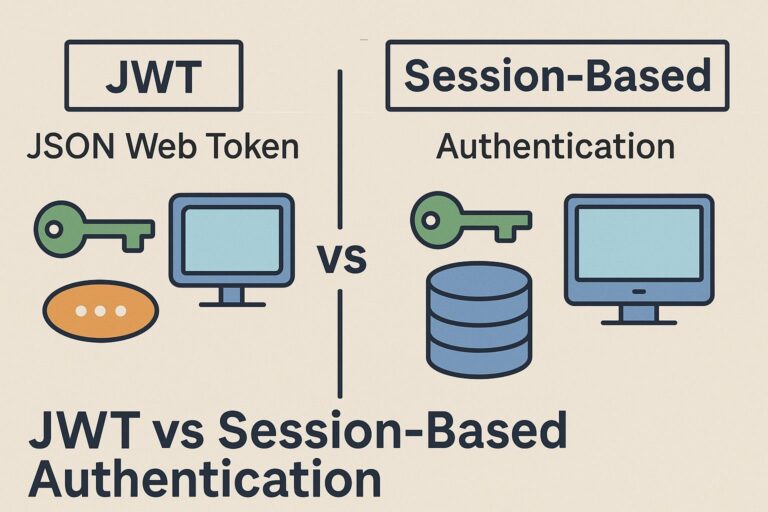
Object-Oriented Programming (OOP) stands as one of the most influential and widely adopted programming paradigms in modern software development. It offers a structured approach to designing and building software by modeling real-world entities as “objects” that encapsulate both data and behavior. By leveraging key principles such as encapsulation, inheritance, abstraction, and polymorphism, OOP promotes modularity, code reuse, and easier maintenance—critical factors when dealing with increasingly complex software systems.
In this comprehensive guide, we will explore the fundamentals of OOP, break down its core concepts in detail, and illustrate each principle with practical examples in Python—a versatile language renowned for its clean syntax and full support for object-oriented design.
What Is Object-Oriented Programming?
At its core, Object-Oriented Programming is a methodology where software is organized around objects rather than actions, and data rather than logic alone. An object is an instance of a class, which serves as a blueprint or template defining a set of attributes (variables) and methods (functions) that operate on those attributes.
Unlike procedural programming, which follows a step-by-step sequence of instructions, OOP organizes code into logical units that mirror real-world entities or abstract concepts. This natural mapping simplifies software design, making programs easier to conceptualize, test, debug, and extend.
Core Concepts of OOP
1. Classes and Objects
- Class: A user-defined data type that serves as a blueprint to create objects. It defines attributes (also called fields or properties) and methods (functions) which represent the behavior of the object.
- Object: An instance of a class with actual values. Each object has its own state and can invoke methods defined in its class.
Expanded Example:
class Car:
# Constructor method to initialize an object’s attributes
def __init__(self, brand, model, year):
self.brand = brand # Instance variable
self.model = model
self.year = year
# Method that defines behavior
def start_engine(self):
print(f"The {self.brand} {self.model} engine has started.")
def get_car_info(self):
return f"{self.year} {self.brand} {self.model}"
# Creating multiple instances (objects)
car1 = Car("Toyota", "Camry", 2020)
car2 = Car("Honda", "Civic", 2019)
car1.start_engine() # Output: The Toyota Camry engine has started.
car2.start_engine() # Output: The Honda Civic engine has started.
print(car1.get_car_info()) # Output: 2020 Toyota Camry
print(car2.get_car_info()) # Output: 2019 Honda Civic
2. Encapsulation
Encapsulation is the practice of bundling data and methods that operate on that data within a single unit or class and restricting direct access to some of the object’s components. This prevents external code from modifying internal object state in unpredictable ways, thereby maintaining data integrity.
In many languages, access modifiers like private or protected enforce encapsulation. Python uses name mangling with double underscores to indicate “private” attributes.
Extended Example:
class BankAccount:
def __init__(self, owner, balance=0):
self.owner = owner
self.__balance = balance # Private attribute
def deposit(self, amount):
if amount > 0:
self.__balance += amount
print(f"Deposited ${amount}. New balance: ${self.__balance}")
else:
print("Invalid deposit amount.")
def withdraw(self, amount):
if 0 < amount <= self.__balance:
self.__balance -= amount
print(f"Withdrew ${amount}. New balance: ${self.__balance}")
else:
print("Insufficient balance or invalid amount.")
def get_balance(self):
return self.__balance
# Usage
account = BankAccount("Alice", 1000)
account.deposit(500)
account.withdraw(300)
print(f"Balance: ${account.get_balance()}") # Output: Balance: $1200
# Trying to access private variable directly will raise an error
# print(account.__balance) # AttributeError
3. Inheritance
Inheritance allows one class (called a subclass or derived class) to inherit attributes and methods from another class (called a superclass or base class). This enables code reuse, establishes a natural hierarchy, and facilitates polymorphism.
Inheritance supports “is-a” relationships, where the subclass is a specialized type of the superclass.
More Detailed Example:
class Animal:
def __init__(self, name):
self.name = name
def speak(self):
print("Animal makes a sound.")
class Dog(Animal):
def speak(self):
print(f"{self.name} says: Bark!")
class Cat(Animal):
def speak(self):
print(f"{self.name} says: Meow!")
dog = Dog("Buddy")
cat = Cat("Whiskers")
dog.speak() # Output: Buddy says: Bark!
cat.speak() # Output: Whiskers says: Meow!
Here, both Dog and Cat inherit the name attribute from Animal but override the speak method to provide specific behavior.
4. Polymorphism
Polymorphism means “many forms” and allows methods to behave differently based on the object that calls them, enhancing flexibility and code extensibility.
Polymorphism allows you to write code that can operate on objects of different classes that share a common interface or base class.
Example Using Polymorphism:
def animal_sound(animal):
animal.speak()
animal_sound(Dog("Max")) # Output: Max says: Bark!
animal_sound(Cat("Luna")) # Output: Luna says: Meow!
Here, animal_sound can accept any object with a speak method, demonstrating polymorphic behavior.
5. Abstraction
Abstraction hides complex implementation details while exposing only essential features. It helps reduce complexity and isolate the impact of changes.
In Python, abstraction can be achieved using abstract base classes (ABCs) from the abc module, which define abstract methods that subclasses must implement.
Example:
from abc import ABC, abstractmethod
class Vehicle(ABC):
@abstractmethod
def start_engine(self):
pass
class Car(Vehicle):
def start_engine(self):
print("Car engine started.")
class Motorcycle(Vehicle):
def start_engine(self):
print("Motorcycle engine started.")
# vehicle = Vehicle() # Error: Can't instantiate abstract class
car = Car()
motorcycle = Motorcycle()
car.start_engine() # Output: Car engine started.
motorcycle.start_engine() # Output: Motorcycle engine started.
Why Use Object-Oriented Programming?
- Modularity: OOP breaks programs into discrete classes and objects, making code more organized and manageable.
- Reusability: Inheritance and polymorphism allow developers to reuse existing code effectively, reducing redundancy.
- Scalability: OOP designs facilitate easy extension and adaptation as software requirements evolve.
- Maintainability: Clear separation of concerns and encapsulation reduce complexity and make debugging easier.
- Real-World Modeling: OOP provides intuitive modeling of real-world entities and their interactions, improving clarity.
Additional OOP Concepts and Best Practices
- Composition Over Inheritance: Favor composing objects with other objects over deep inheritance hierarchies to increase flexibility.
- Design Patterns: Common OOP design patterns like Singleton, Observer, Factory, and Strategy solve recurring design problems and improve code robustness.
- SOLID Principles: Five principles that guide good OOP design for maintainable and scalable codebases.
- Interfaces and Protocols: Define contracts for classes to follow, promoting loose coupling.
Conclusion
Object-Oriented Programming is a powerful and versatile programming paradigm that allows developers to build structured, reusable, and maintainable software by modeling data and behavior as objects. Mastering the core concepts—classes and objects, encapsulation, inheritance, polymorphism, and abstraction—forms a foundation for writing clean, scalable code.
Whether you are creating simple scripts or complex systems, a solid grasp of OOP principles is essential for modern software development and design.

I’m Shreyash Mhashilkar, an IT professional who loves building user-friendly, scalable digital solutions. Outside of coding, I enjoy researching new places, learning about different cultures, and exploring how technology shapes the way we live and travel. I share my experiences and discoveries to help others explore new places, cultures, and ideas with curiosity and enthusiasm.






